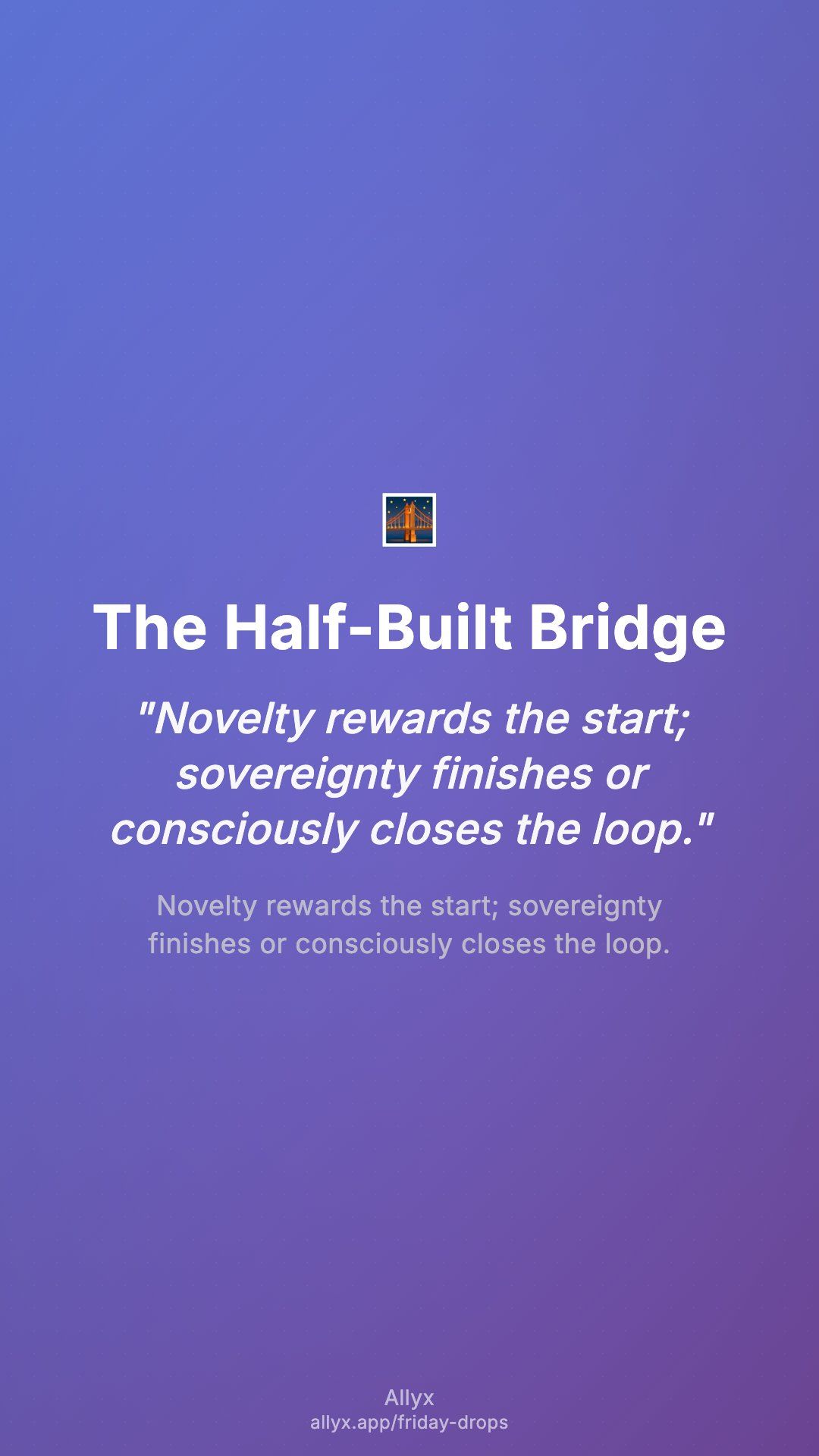The Half-Built Bridge
Novelty rewards the start; sovereignty finishes or consciously closes the loop.
Tuesday, September 2, 2025
Metaphorical Narrative
Fog clings to a gorge where a steel bridge stretches from your bank and stops mid‑air. Crates of bolts sit unopened, the paint still gleaming. The far side is visible, maddeningly close.
The crew has packed up. The wind moves through the empty scaffolds like breath through a flute. From above, the photographs look impressive—yet no one can cross.
Core Insight
Starting feels intoxicating because novelty floods the system with anticipation dopamine. But persistence draws on executive functions—working memory, inhibition, and task switching—which are costly to sustain. Unfinished work leaves a Zeigarnik residue: open loops linger in cognition, increasing self‑discrepancy and quiet guilt.
Arrival fallacy tempts the ego to chase the feeling of ‘almost there’ while avoiding the non‑glamorous closure work. The pattern compounds: more starts, fewer finishes, heavier cognitive load. Relief comes when ‘done’ is redefined as either completed or consciously closed—both resolve the loop and return attention to the present.
Identity Shift Tie-In
Observer Mode steps out of the fog and names the finish line. Sovereignty is the identity of the Closer: the person who either crosses or removes the bridge. You become the one who chooses, not the one who is haunted.
Saturday Experiment
- List three ‘half‑built bridges.’ Pick one and define a Minimal Crossing Unit (MCU) that fits in 30–60 minutes.
- Do the MCU now. If the project is no longer true, declare it closed and archive artifacts—intentionally.
- Write a sovereignty line: “I resolve loops. I finish or release.”
Sunday Reflection
-
How would a third‑person narrator describe their pattern with half‑finished work?
-
What MCU would they choose if they valued peace over optics?
-
Where does their definition of ‘done’ need to become finish or release?
-
What loop, once closed, would free the most attention?

